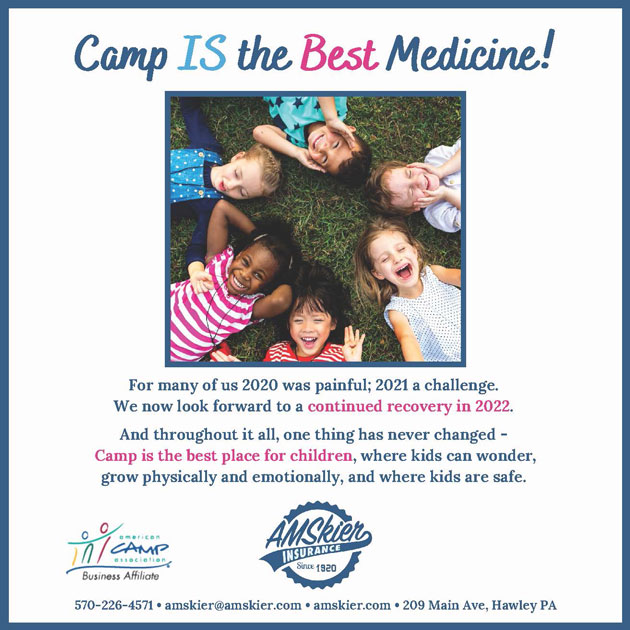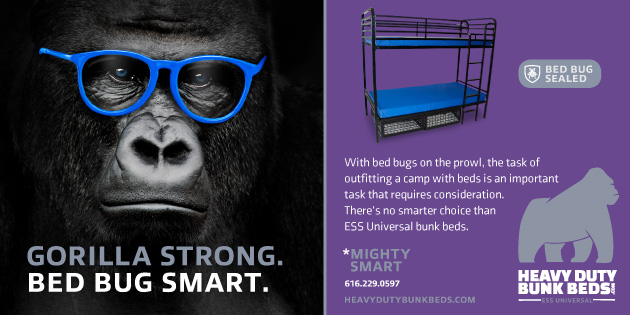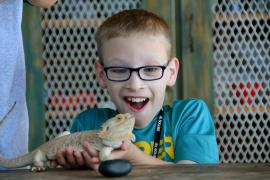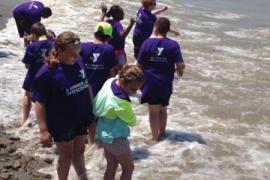When it comes to setting the standard for green buildings, the US Green Building Council (USGBC) is leading the way through its promotion of sustainability in the design, construction, and operations for buildings, communities, and cities. Their approach focuses on using collaboration and communication across all aspects of a Leadership in Energy and Environmental Design (LEED) project. LEED is an environmentally and socially responsible certification program recognized across the globe as a symbol of sustainability achievement and leadership. Stephanie Young, vice president, technical solutions, for the USGBC and a member of the Green Camps Certification Committee, said:
“LEED provides building owners and operators with a framework for identifying and implementing practical and measurable green building strategies for all building types and communities where people live, work, learn, and play. Green buildings and now green camps, allow us to live and work more sustainably in ways we can all experience — in our health, the air we breathe, the water we drink. They can offer us a better quality of life, while also lowering global carbon emissions, reducing electricity and water bills, and creating new green jobs.”
LEED Certification and ACA Accreditation were two of the main influencers in the 2014 founding of Green Camps to provide outreach education and develop the camp industry’s first green certification program. Green Camps supports any camp in accessing the educational, environmental, and economic benefits of sustainability.
Connecting with thousands of camp and sustainability professionals to better understand the barriers and motivators to go green has helped in the development of resources to address challenges and access the associated benefits.
The best approach to greening your camp is through creating a culture of sustainability within and around your organization. By taking intentional and well-thought-out steps, your organization can establish a framework that reflects its unique needs and opportunities.
Conduct a Needs Assessment
When it comes to taking action, you have many opportunities to model sustainability at your camp, which can be overwhelming. A needs assessment will help you collect data to highlight the low-hanging and high-up-in-the-tree fruits.
Asking questions about energy, water, waste, and office conservation will help you to establish a baseline for implementing green actions.
What Should a Needs Assessment Accomplish?
- Ask questions to help your camp highlight green actions you are already taking, are interested in starting, or that aren’t a good fit for your camp.
- Highlight opportunities that will best meet your sustainability goals.
- Collect data that can be used in research to clarify the challenges, opportunities, and solutions associated with greening a camp.
- Access funding and other available resources to support your sustainability efforts.
Sample Green Needs Assessment Questions
Does your organization communicate its sustainability goals and efforts to camper families?
A recent report from Green Camps found that 72 percent of camper parents report putting in quite a bit of effort as a family to reduce their environmental impact, and 80 percent say they talk to their children regularly about environmental responsibility.
Sustainability programming and green facility updates could help build additional connections with your campers and their families even after they have left camp.
Do you compost at your camp?
- Yes
- Yes, and we’d like to do more
- No
- No, but we’d like to
- Other
While this is a simple question with simple response options, it gives a good sense of your organization’s attitude toward composting and will help streamline the abundance of resources and advice you’d need to implement or grow your composting program.
How does your camp track and monitor energy and water use?
Did you know it’s possible to track your energy use in real time? Your phone can notify you if energy consumption spikes outside its normal range.
Even without real-time tracking, you can review bill usage reports and compare them to previous years’ to address high-usage spikes.
You can cut your energy bill by tracking your use to understand how much you are using and measure the success of the steps you take to reduce energy usage.
Does your camp sell “green” products at your camp store (such as organic cotton T-shirts, recyclable toothbrushes, water bottles)?
Your camp store provides an excellent opportunity to highlight green products. From a toothbrush made from yogurt containers to a water bottle that when used eliminates the need for single plastic bottles. What an awesome teachable moment!
A good question is one thing, but your response is what will help guide your green team in building the culture of sustainability at your camp.
Build Your Team
Invite people from your community to come to the table and form a green team. Have fun, ask good questions, take good notes, and begin building a team to create a vision of what sustainability can look like at your camp.
Set Goals
Don’t forget you’re a team. “Going green” is challenging, and you’ll need a diversity of ideas, experiences, and knowledge to be successful and access the benefits of your efforts.
Invite everyone to share what sustainability means and looks like to them. This can kick off a brainstorming session to create a comprehensive list of challenges and opportunities to help set your goals.
A great acronym for setting goals is SMART:
Specific
A goal should aim for a specific target. It is not merely a general direction, but rather a particular location or achievement
Meaningful
A goal ought to require effort and accomplish something significant. Something that comes naturally doesn’t need a goal.
Attainable
On the other hand, a goal should be realistic. There is little point in setting a goal that clearly requires more resources than you have.
Relevant
A goal should have a legitimate purpose and be relevant to a specific need.
Timebound
Every goal needs a target date, including measurable achievements along the way.
Sustainability is a broad and intimidating concept, and if you’re taking the steps to be more sustainable, that probably means a lot of goals. With that comes the need for a bigger budget, more staff, and lots of time.
I suggest breaking your brainstorming down into five categories and aiming to create at least one overarching goal in each area:
- Nature
- Water
- Waste
- Energy
- Other
The “other” category is because five categories could never encompass all the opportunities you have to model sustainability and inspire green behavior change.
You may think this sounds all well and good, but you need help to make a sustainability plan. Try this sustainability plan creation tool that your team can use in person or virtually on a Zoom call to make it happen: greencamps.org/sustainabilityplan.
Get to Work
Now that you have set your SMART goals, it’s time to guide your team to success in completing the work to accomplish them.
With SMART goals should come a smart approach to what your team wants to achieve.
Ask questions to gather information that will help you in planning and pre-empting any questions that your full-time camp staff will inevitably ask.
- What action are you proposing?
- Who needs to be involved in the planning, implementing, and managing of the action?
- What are the steps and estimated timeline of this action?
- What resources will you need to purchase/source to implement the action?
- What challenges do you anticipate in implementing this action?
- How will this action engage your campers/staff?
- What questions do you have about this action that are still unanswered?
- Please share any additional thoughts or comments.
Use these questions to build a proposal that you can share with your green team and organizational decision makers to get them approved and implemented.
Share
By sharing your experiences and lessons in greening your camp, you can help expand knowledge of the challenges and successes of green actions being taken at camps around the world. Maybe you’ll even inspire someone to take action at their camp.
Wood Stove — Jameson Ranch Camp
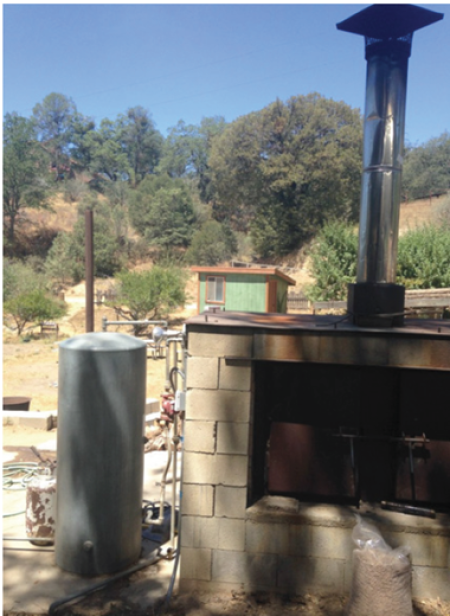
A kitchen staff member at Jameson Ranch Camp in California builds a fire in the bottom of a wood stove. As the fire begins to take, more kindling and wood is added to increase the heat to cook six large trays of honey-glazed chicken.
Wood contains potential energy that is released when burned in the form of heat. In order to capture otherwise wasted energy, copper piping carries water through the wood stove.
A water heater captures and stores the water (See Figure 1).
After the campers and staff finish their meal, the heated water is collected and used to wash the cups, plates, and pots and pans used to make and serve the food.
This is a great example of how we can rethink the way we use our resources. Looking through a sustainability lens, we can find solutions to use resources like energy and water more efficiently.
Solar Pool Heating — Hidden Valley Camp
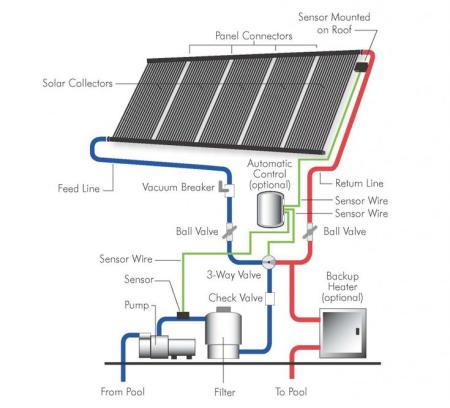
When they wanted to make a green change to their pool heating system, camp and maintenance staff from Hidden Valley Camp in Maine and a local plumber brainstormed to determine which system would work best. They changed from heating with oil to a passive solar field system with gas backup (see Figure 2). This included ground mounting multiple panes that contain eight to nine miles of tiny tubes to passively heat water, which is then recirculated. The investment included:
- Panels and Infrastructure = $3,500
- Heaters and Labor = $6,500
Note that oil burners also needed to be replaced.
Hidden Valley Camp is now seeing annual oil savings of $2,000.
Sustainability Goals — Usdan Summer Camp for the Arts
In 2020, Usdan Summer Camp for the Arts in New York committed to a set of ambitious sustainability goals (see the following tables).
| The Goal | How We Define Success |
|---|---|
| Achieve zero waste to landfill by 2025. | By 2025, at least 95 percent of Usdan's generated waste is diverted away from landfill. Which means that all solid and organic waste produced is either reused, recycled, composted, or sent to energy recover. |
| Achieve zero operated impact on forest and habitat by 2023. | By 2023, Usdan will achieve zero operated impact on its forests. |
| Achieve zero net carbon emissions by 2030. | By 2030, Usdan will achieve zero a balance between man-made carbon gas emissions and their sequestration, avoidance or removal from the atmosphere. |
| Empower 100 percent of campers to take lessons learned about sustainable practices at Usdan to life outside of camp by 2025. | By 2025, at the end of each camp session, 100 percent of the campers have the tools they need to create change in their communities and the desire to do so. |
| Create a sustainability network with like-minded organizations to share lessons learned, best practices, and resources to drive achievement of sustainability goals by 2022. | By 2022, a sustainability network will have agreed upon a charter to establish the mission and purpose of the network and a cadence for members to meet. |
To ensure success, Usdan will execute upon these enablers:
| Enabler | How We Define Success |
|---|---|
| Develop and implement a sustainable purchasing and investment policy for Usdan by 2023. | By 2023, Usdan will abide by and incorporate a sustainable purchasing and investment policy into its purchasing and investment decisions. |
| Develop and implement a sustainable facilities and grounds policy, addressing renovations, maintenance and new construction by 2024. | By 2024, Usdan will abide by and incorporate the facilities and grounds policy and appropriate guidelines into all facilities and ground decisions. |
Many questions are yet to be answered and decisions made about the best way for camps to “go green.” In the spring of 2021, Green Camps formed a committee to help guide the continued development of best practices for sustainability in the camp industry. This committee will facilitate research and feedback to develop a credible and reputable certification program to help facilitate and recognize camps’ sustainability efforts.
Whether you’re just getting started or want to build upon your green efforts, going green has the potential to bring lots of benefits to your camp and the youth and adults you serve.
Join the conversation and share your sustainability at wins @gogreencamps and on the ACA Sustainability community.
To further assist you, Green Camps is offering free membership to access its needs assessment in the online community. Check it out at community.greencamps.org and visit our website greencamps.org for additional resources and support in your sustainability journey. And stay tuned for an article on the barriers and motivators to camp sustainability and related research in the March/April 2023 issue of Camping Magazine.
Growing up, Danny Sudman spent 16 summers at YMCA Camp Hanes in North Carolina — first as a camper and later as a camp counselor. After receiving his BA in Sociology from North Carolina State University, he went on to join the leadership team at Catalina Island Camps where he managed the challenge course program and served as an environmental educator. While on the island, he completed the Catalina Environmental Leadership Program, an initiative of Jean Michel Cousteau’s Ocean Futures Society. Danny founded Green Camps in 2014, believing 100 percent in the extraordinary ability of the camp community to inspire and develop the next generation of environmental leaders.

